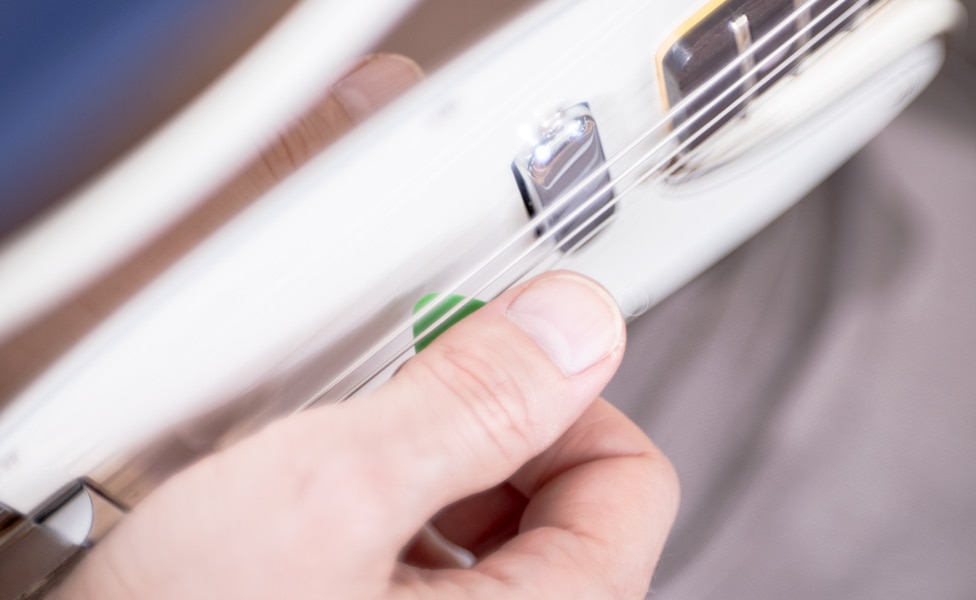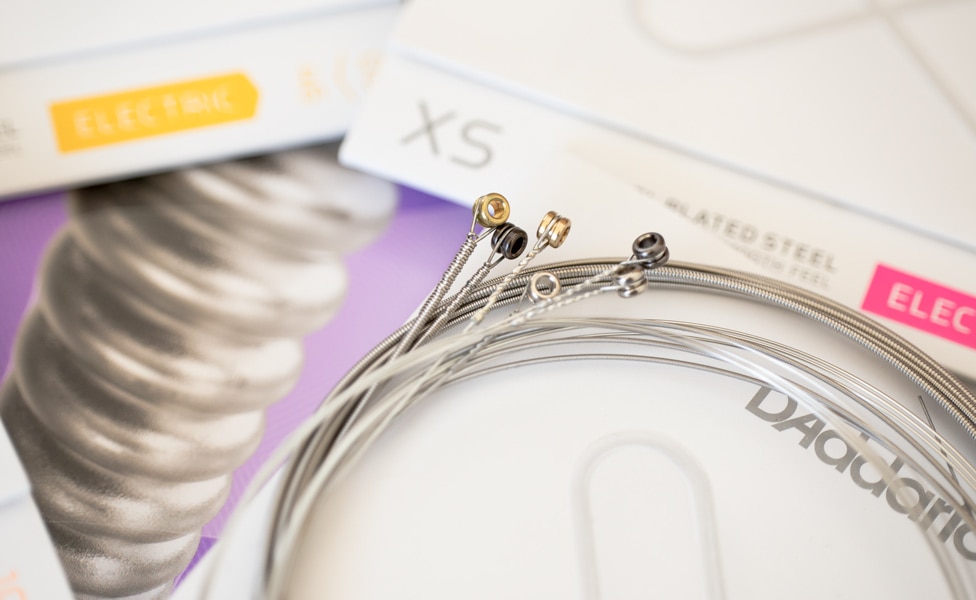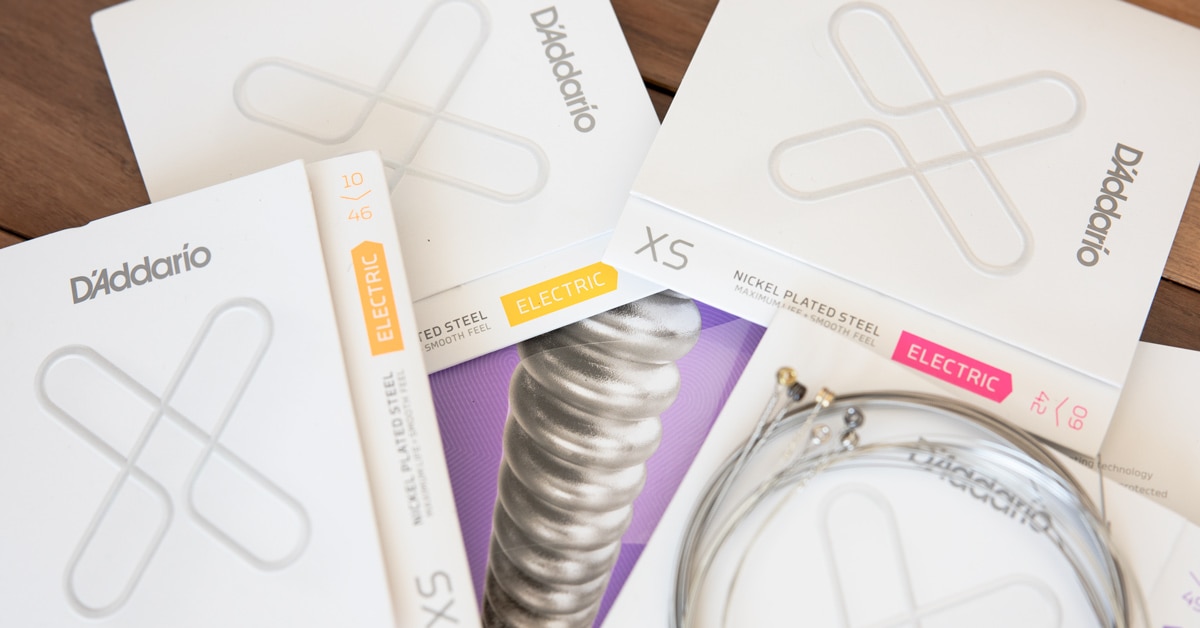The D'Addario family has been innovating string design for literally hundreds of years—from hex core strings to the more present and articulate nickel-plated steel that captivated the emerging rock generation of the 1960s. Five years ago, the manufacturer started re-engineering its coated strings with a thinner and more corrosion-resistant film, resulting in the 2019 release of XT series strings, the 2021 debut of XS acoustic strings and the new XS electrics.
Triple-threat R&D director for strings and special projects Worth Dixon has a background in engineering and business, but he is also a life-long bluegrass musician and self-confessed “banjo fanatic.” Here, he digs into the development of the XS and XT technologies, as well as the reasons why coated strings offer prolonged tonal life and a great feel.
The HUB: What was the impetus for the XS family of acoustic and electric strings?
Worth Dixon: For about 20 years, EXP was our coated-string brand in the market. It was a great product for us, but we realized we could do better. So, around five years ago, we started to explore new types of polymer coatings, as well as new ways of coating strings. The first big opportunity that jumped out at us was the XT series of strings—our first significant generational improvement over the EXP technology. We realized we could make the coating thinner and more corrosion resistant, while giving the strings a better feel and enhanced acoustic properties. We saw that people did migrate to XT, and it was a pretty big success for us.
Our further work on film-coating technologies produced the XS strings. We now had those two technologies in our portfolio, and it was a question of developing them—ensuring the performance was there, that the market would appreciate the products, and how to correctly launch them. We’re actually at a point where we’ve retired the EXP brand, and we're moving forward with our XT and XS technologies.
The HUB: How much more life can a player expect out of an XS string, as compared to an uncoated string?
WD: It’s hard to say, as there are a lot of factors involved. How much is the string played and how aggressively? Is it played using a pick or fingers? What is the player’s particular body chemistry? Some people have a body chemistry that's much more corrosive than others, and they can destroy a set of uncoated strings in one night. Literally, halfway through a gig they will be struggling with the tone of their strings going south. So, it depends. But a coated string like XT—and particularly XS—is going to last three to five times longer than an uncoated set. Maybe more.
We can actually test this in our R&D lab. We'll do a corrosion test where we spray strings with synthetic sweat—a salt and mild acid solution. If you put that on an uncoated string, within 24 hours they'll be totally trashed. You'll see corrosion up and down. When we use the spray on an XS string, it looks untouched. There's clearly a difference. An XS string is going to last much longer than an uncoated string.

The HUB: What else can cause string degradation?
WD: There are two main factors that degrade the tone and feel of your strings. We just discussed one—grit and grime such as skin particles, oils from your fingers and sweat. That stuff builds up in the windings of an uncoated string until it won’t vibrate properly and the string goes dead.
The other factor is environmental. There are things present in the atmosphere that cause the string to corrode, such as humidity and even sulfur dioxide—like what you get from coal-burning factories. Even if you never touched a string, but left it out in the air, it would tarnish and begin to corrode over time.
The XS coating is basically impervious to atmospheric effects attacking the surface of the string, and it also covers the gaps between windings, which protects the windings from having skin particles and oils from your skin driven down into those gaps.
The HUB: What can a player expect XS to feel like?
WD: The interesting thing about the XS and XT technologies is they have a very comparable smoothness to them—which is fantastic for an electric player. For example, that smoothness really enables motion on the strings when you’re doing slides or bends, and there’s not an abrupt transition between the wound strings and the plain steels. That’s critical, because you might find other coated products out there where the wound strings feel slick, but then when you get to the plain-steel strings, they feel a bit grippy. That’s often due to a bare nickel plating that has more friction. You can distinctly feel the difference in those strings when you're playing across all six, whereas XS electric strings have a consistent and smooth feel on every string. It's not too slick. It's not too dry. It's just right for electric playing. Having both XS and XT coating technologies in-house allowed us to optimize strings for that kind of feel. An added benefit is that the coating reduces finger noises, so you have a little less fretting sound as you move your hand along the strings.
The HUB: Did you run into any challenges during the development process?
WD: Absolutely. The enabling technology for XS to work is the extremely thin film used to cover the string. If you think about thin polymer films, a common example is Cling Wrap. But you can’t cover a string with that, because it’s too thick. Cling Wrap would deaden the string and it would sound terrible. You need a film that's 1/20th the thickness of Cling Wrap, and it needs to be extremely strong, or else simply playing it would break it. It also needs to be impervious to humidity and perspiration permeating the film and causing corrosion on the string underneath.
Unfortunately, when we explained the problem we were trying to solve to vendors, we ran up against the fact that D’Addario is a fairly small company in a tiny musical-instruments industry. As a result, it was difficult getting the large manufacturers working in polymer films and advanced materials to focus on our application. We did get materials from some manufacturers that were close, but they didn’t deliver the performance we were looking for, and we couldn't get them to develop the technology for us. It just wasn't interesting to them from a business perspective.
I recall the day very clearly when we sat down with Jim D’Addario and our engineering team to discuss the challenges we were having in finding the material we needed to create this product and make it successful. As we were talking it through, we realized we were going to have to figure out how to make the film we needed ourselves. That was a major turning point in the project.
Once we pivoted to that mindset, we experimented until we found a way to make the film we needed. We had to design and build our own equipment, but now we can optimize the film—control its thickness, acoustic properties, durability and corrosion resistance.

The HUB: So, you almost have parallel R&D paths. You have the idea of the product itself, but you must also develop the equipment and processes that enable you to make the product.
WD: Yes. There are three lanes of work. You need a product. You need a design, prototypes and the materials to make it. You need a process to bring those together to create the product. You also need the test equipment necessary to validate the performance and monitor and control the process.
In this case, you have to figure out how to measure a film that’s this thin. How do you measure corrosion resistance? How do you measure durability? How do you measure the tensile properties of the string? How do you measure the acoustic properties of the string? You can't go and just buy those machines off the shelf somewhere. You have to think about how to make those measurements, design the equipment, write the software to run the routines, capture the data, and analyze the data.
The HUB: And, theoretically, all of that learning and capability carries over to other products in your product line.
WD: Exactly. As we add additional capabilities, they all start to add up and enable adjacent opportunities. For example, an important capability that came into play for XS was the fact that, years ago, we developed NY Steel, which is a very high-tensile string for core wire that we use in products such as NYXL and XS. So, that NY Steel technology is based on our wire-drawing capability in our wire mill. That piece of the puzzle was already in place, and we built on top of that so that the XS ingredients became NY Steel, the nickel-plated steel wrap wire, the XS film and then the ability to apply that to a string and make the finished product. What you're seeing is several capabilities coming together to make this coated string.
The HUB: How far away do you think we are from coating being the norm across all string lines?
WD: Is a coated string going to be the solution for everyone? Well, there may be people who still prefer an uncoated string, such as traditionalists who enjoy the heritage of an uncoated string. That's fine. Everybody has a preference.
But we will make coated strings available across our portfolio, and I think what we'll see is increasing adoption, because the value proposition is so strong. You can have a great-sounding string that lasts a long time. It's worth the investment.
Learn more and order your D'Addario XS electric guitar strings.







































































































































